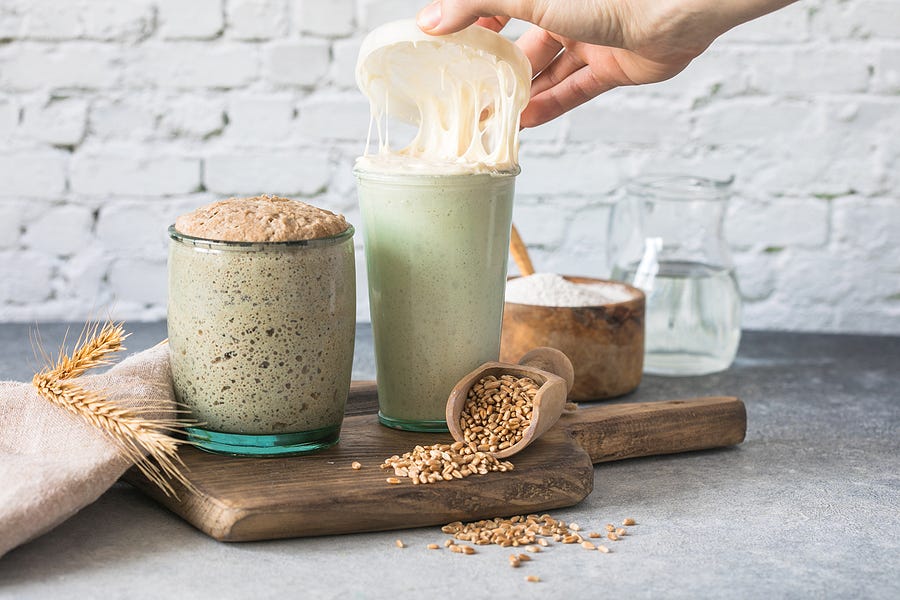The Insanity of Feeding a Sourdough Starter
I admire those who keep up the daily sourdough ritual—but let’s be honest, our ancestors managed just fine without babysitting their starter.
Let’s get this out of the way: I bake sourdough bread without feeding a starter. If that sounds impossible, think again. I’m a German engineer—trained in the art of precision—and I grew up eating bread every day, for both breakfast and supper.
After living in the United States for over thirty years, I also embraced the KISS principle: Keep it simple, stupid. And when you combine precision with simplicity, it becomes clear—daily sourdough feeding is inefficient, time-consuming, and frankly, wasteful.
Sure, you can use sourdough discard to make pancakes every day—or toss it in the compost or trash. And if you skip a feeding, you’ll need to revive the starter before baking. Some sources even suggest feeding it for six to fourteen days. My God, what a waste! All this fuss ties back to an almost obsessive pursuit of the perfect oven spring—a topic I’ll tackle in a future post.
That said, I still enjoy baking sourdough bread. So I began digging into how our ancestors did it—without maintaining a dedicated starter. What I found is that they simply saved a piece of dough from one bake and incorporated it into the next. In fact, many German bakers still do this today. But even they “feed” these leftovers after baking to build up enough levain for the next batch.
I suspect this practice eventually morphed into the daily feeding ritual. But for home bakers—who don’t bake daily—this leads to feeding without baking, which feels unnecessary and inefficient. I admire those who put in that level of care and passion, but it’s not for me.
Instead, I keep things simple. After bulk fermentation, I set aside 120 grams of dough—about 20% of the total flour weight, for those following baker’s math. I refrigerate it and bake roughly twice a week. At first, I worried it might be too weak, but I’ve found that this leftover dough performs just as well as a traditional wet starter.
My method differs in two key ways: it includes salt and has a much lower hydration level, both of which help preserve the levain. And I don’t feed it before baking. The results? A crisp crust, airy crumb, and great flavor.
I’m still refining the bulk fermentation stage—arguably the most critical part of sourdough baking. It’s a process that’s been documented in great detail by many experts… just rarely in a way that’s actually helpful to beginners.
The King Arthur Baking Company Big Book of Bread: 125+ Recipes for Every Baker
Authoritative and accessible, The King Arthur Baking Company Big Book of Bread is exceptional for its range: the 125 recipes for yeasted and naturally leavened bread are designed to appeal to novices and advanced bakers alike, as well as to those who are deep into sourdough.
Everything you need to know about making a perfect loaf is here, from folding and shaping techniques to flour, yeast, and temperature information. You'll also find essential tips, such as how to work with temperamental dough and best practices for storing different breads. A gorgeous four-color photo accompanies each recipe, and the instructional information includes step-by-step photography and QR codes that direct you to how-to videos. More Information…



